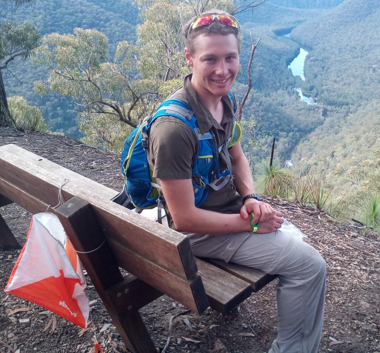
I have a theory that for every person, there is about a 20 degree Celsius range in which most people can comfortably participate in vigorous outdoor activities. I have known many a cold-blooded species who will happily go running and cycling in near 40°C temperatures, but wear a jacket if it drops below 25°C. And then there are other extremes, myself included, who are relatively comfortable as the temperature drops to near freezing provided they keep moving, but start to complain about overheating once the temperature rises much above 20°C.
One of the beauties of rogaining is the disparity of weather conditions across the year that test the limits of people anywhere on this spectrum. I will discuss gear for the cold later this year, as I expect it is probably as far from most people’s minds as a 100-pointer is from the Hash House. However, with the extreme heat we’ve experienced lately, strategies for dealing with hot weather – particularly regarding hydration – seem very relevant.
As an organiser for the Springwood MG when a rogainer’s body shut down in 35°C in the middle of the bush, and having personally become delirious in the similarly hot Scheyville Minigaine 2018, I am keen to consider gear and strategies to reduce the likelihood of such incidents.
When seeking other people’s experiences on heat and hydration, my mind immediately went to our friends up north in Queensland, who on average experience temperatures 5 degrees warmer than NSW.
Paul Guard – former QRA president, current ARA secretary, and longtime competitive rogainer, kindly offered to give a few insights about facing high levels of mercury, or alternatively, about handling conditions when the mercury is high.
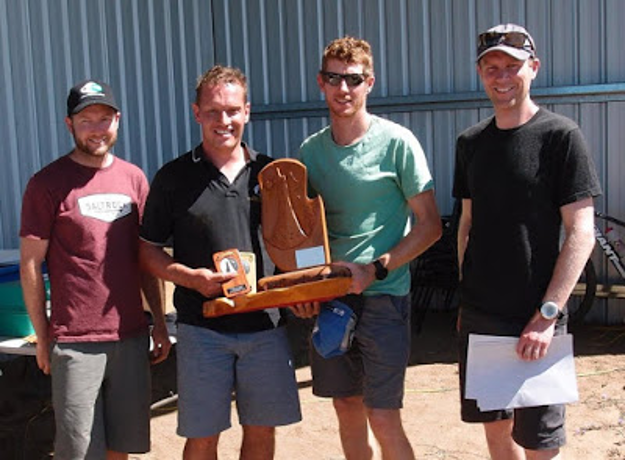
Richard Robinson, who featured in last month’s gear article, also shared some of his experiences.
Tristan White: What issues have you experienced or seen from rogainers who have suffered by going too hard and not drinking enough in the heat?
Paul Guard: The worst I experienced was at the Warrumbungles WRC in 2006 where both my teammate Tony and I ran out of water and suffered heat exhaustion. In Tony’s case it was quite severe and he ended up in the first aid tent. We both became quite disoriented on our way back to the HH.
Richard Robinson: I have two vivid experiences. The first was WRC1998 in Canada. It was 40°C and quite humid. One of the hottest days ever recorded at the location. From early on I could see my partner, Peter Merrotsy, sweating profusely and with a lot of salt build up on his shirt. Some 6 hours in he was getting very slow and saying he felt unwell. He started to stagger a bit and then fell briefly unconscious and started vomiting. I thought “this is not ideal!” I got him up and we crawled to the next CP by which time it was dark and he was no better. We made our way very slowly to the nearest WP, about 3km away and I wrapped him in the space blankets that we had because it was starting to get quite cool (and the mosquitoes were so thick you could barely see through them!) and then left him as I jogged the 8km back to the HH and they sent a vehicle out to collect him.
The second incident was the 1999 Croc’n’Rock 24hr Rogaine in the NT, having pulled out early in the afternoon due to an injured teammate. On Sunday morning I was dropped at the furthest point of the almost trackless map just after daylight to start picking up CP markers as anyone who was out there with 5hrs to go would not finish in time. There was plenty of water on course but it was a hot day. I started feeling unwell and then started cramping so badly that at one stage I couldn’t bend down to pick up water and took 10 minutes to get up a 0.6m high rock face. I took the decision to head for the road. As I neared the HH I started vomiting though the strange thing was that everything I had eaten or drunk in the previous 3 hours was still in my stomach. My digestive system had shut down and I was not absorbing anything. I had formed a view over those four or so hours that I was so badly affected that if I lay down and went to sleep I would never wake up and see my children again. It may well not have been true but it was obviously very scary.
When I got back to the HH I was immediately given 1 litre of IV fluid as the event was run by a bunch of doctors and they happened to have it there. It made no difference, so they took me into Run Jungle where I was given a further 2 litres of IV fluid and I was good as gold!
TW: In addition to slowing down your pace, what can rogainers do to ensure that they do not suffer from the effects heat exhaustion?
RR: Cooling your core temperature is key. Drinking should assist but, as noted above, past a certain point that no longer works. Basically in the worst situations stop in the shade and if you can wet yourself or lie in a stream even better. Withdrawing from the event is a better outcome than DSQ due to death!
TW: What signs should you notice if out on a rogaine that you need to slow down due to dehydration or heat stress?
RR: In yourself, slowing down, feeling sick, cramping. In your partner, the same plus irrational or slurred speech and lots of stupid errors.
PG: Remember that even if you have a high threshold to extreme weather, it doesn’t mean your teammate will. When a teammate goes quiet, it’s usually a sign that something is going wrong. Keep talking to your team so these matters can be addressed before they get worse.
TW: Do you have any suggestions for how people can know how much they need to drink based on the temperature?
PG: I usually start with 3L in hot weather depending on water point availability. 2L can suffice in cooler weather. Overnight your body does usually consume a lot less, but good to carry plenty still.
RR: I work on the theory that having a litre of water you don’t use is way better than having an hour or three with none. I can generally get through a 6-hour afternoon on 3 litres and a 12 hour night on the same unless it is very hot so I adjust the volume carried dependent upon when I will be getting water through the event. I am a fairly high water user, my long time rogaine partner, Viv Prince, drinks about half what I do. We have had event stages where I have started with 3 litres and she with 1½ and I have run out and drunk some of hers.
TW: In addition to water, can you recommend any electrolytes or supplements that reduce the effects of overheating/dehydration?
RR: I use Endura at about 2½ times recommended strength. I start with 600ml and then mix up a second 600ml about halfway through. I try to drink some each hour such that it is all gone in 12 hours. My wife Tamsin prefers Tailwind. We also both take Exceed S! Caps and look to take two of these every 2-3 hours. I used to cramp a lot in rogaines but have been essentially cramp free since using the combination of Endura and S! Caps.
TW: How would your route plans change if extreme heat is forecast?
PG: Water point visitation planning is a key part of route planning, particularly when water points are limited or spaced out. If the weather is hot, it just increases the importance of good planning. Case in point: WRC 2016 (Ross River, NT) where many teams had to change plans due to insufficient consideration of water point locations.
RR: I cannot recall an occasion I changed my pace estimation due to heat but I have carried additional water and/or planned to get to the first water after 4 hours (instead of 6) in very hot conditions.
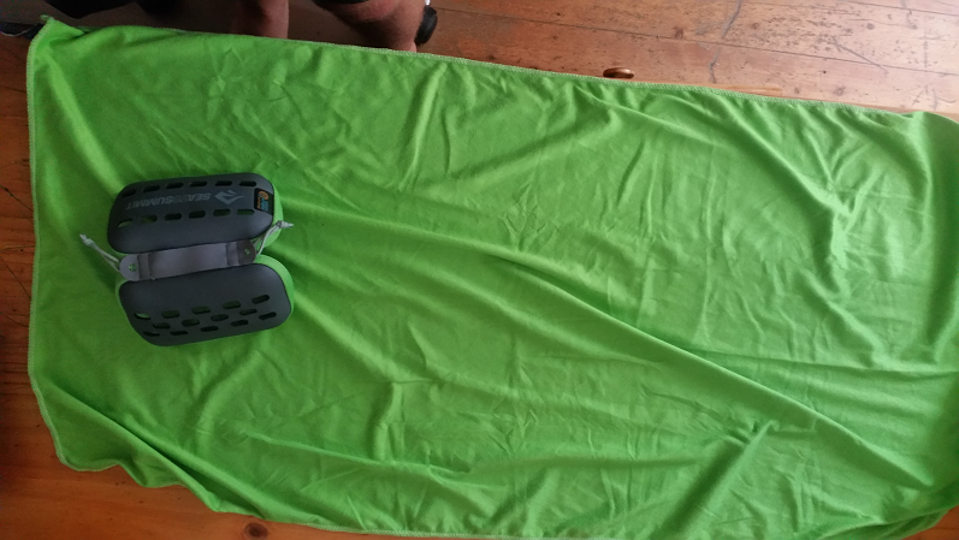
TW: Water bladders are a fantastic invention, however the one problem they come with is the need to physically take it out of your pack to determine how much water is left (and hence how much you’ve drunk). Do you have any suggestions on how to monitor your rate of water consumption with a bladder.
RR: Over time you get a feel for it but it is at times useful to stop and check if you are at a point where you might have an option to either add an emergency water stop or bypass a planned one.
TW: What sort of sunscreen do you carry and how often do you reapply? Does the frequency change depending on the temperature?
RR: Any good quality SPF30+ sunscreen. I am currently using a SPF50+ we bought at Tesco in Pilsen last year which seems to work all day. I put a good amount on before the start and apply another lot a bit after dawn. I do have an olive skin and Tamsin has some African genes so neither of us are massively sun sensitive, so I would imagine those with fair skin would need to reapply more regularly.
TW: Here’s my zinc sunscreen of choice for rogaines, carried in a small perfume container, which lasts longer and is more resilient to sweat than standard 30+ sunscreen. I have fair skin so aim to reapply around 3:30pm and again in the morning – ideally I should reapply even more regularly.

TW: What other clothing do you wear for sun protection?
RR: I wear a hat that stops the top of my head burning as I don’t have a lot of hair (good perimeter but low density) but allows good air flow for cooling. I would cook in a broard-brimmed hat or legionnaires type cap. I do wear sunglasses, well they are prescription glasses with transition lenses, but I wear them to see not for sun protection. I use Adidas glasses as does Tamsin. Note that those with blue eyes are more prone to UV damage.
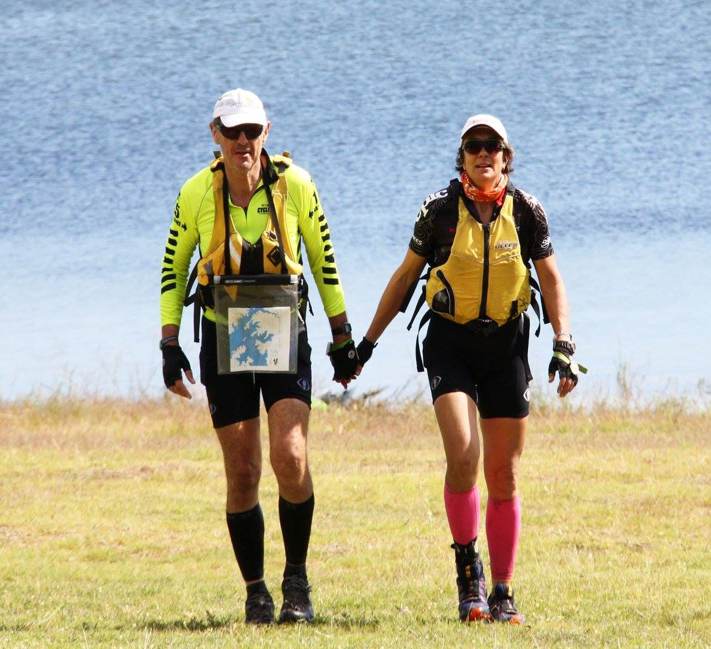
TW: As I have blue eyes, sunglasses are indispensable on a rogaine. My choice of eye-wear, BBB Sports Glasses (primarily made for cycling), can generally be purchased with 3 sets of lenses including dark, clear and light, and at night I change to clear ones to protect my eyes from swinging branches.
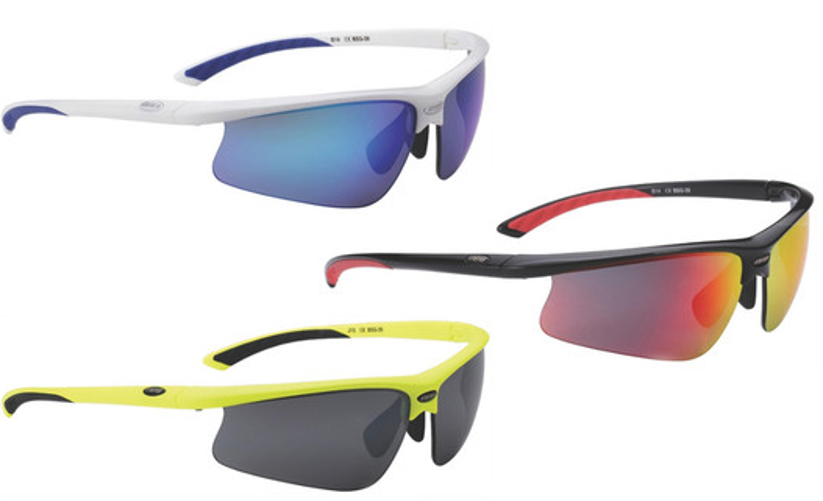
TW: What can organisers do as they set courses and plan the on-the-day running of the events that consider the impacts of high temperatures and ensure participants are aware of the risks associated with the heat? Aside from imminent bushfire danger, do you think there are reasonable grounds to call off or otherwise modify a rogaine due to heat?
RR: Ensuring that the water points are accurately marked on the map and never run out of water is the key. I see no reason to change the course due to increased temperature but you should be making participants very well aware of the conditions, the need to take account of them and the need to be prepared to withdraw if they become badly heat affected. I believe that the competitors need to take personal responsibility as each person handles adverse weather difficulty.
A well set course requires competitors to make conscious choices about when and where they collect water. If a team can set their preferred route and they just “trip across” water on a regular basis without having to plan for it then that is a poorly set course. (I know some others do not agree with this view!)
So in summary:
- Be aware of the weather forecast on the event day, and know your heat threshold – what temperature your performance starts becoming impeded. Withdrawing or not being competitive may be the best bet if a team member is sensitive to the heat.
- Be willing to revise your route – not just in terms of distance, but also regularity of water refills, reducing climbing and where possible seeking shade and passing near water bodies.
- Take sufficient sunscreen, and reapply it regularly, particularly if you have fair skin. I would consider putting thick sunscreen on dirty, sweaty skin about the least enjoyable component of a rogaine, but far less unpleasant than the effects of sunburn later on! If your skin/eyes are sensitive to the heat then take additional precautions.
- Just keep drinking! When you’re exerting yourself, it’s very easy to get dehydrated but very hard to come back from. Make sure you are well hydrated before the event start.
Thank you, Paul & Richard, for sharing your wealth of experiences! Keep cool in the Sunshine State!
One thing these guys didn’t mention was the need to hydrate on the day prior to the event so that you approach it fully hydrated. As your body requires you to run or at least have a high physical output, absorption rates while exercising are reduced so prehydration is important. I note too that there is mention of putting on a wet towel. Our most efficient way of cooling is through sweat evaporation and wetting the skin, especially with cold,can result in venous shut down and thus increase in core temperatures. They mention drinking a lot of water but as you are losing loads of electrolytes it is very important to replace them as much as possible rather than take water which is flushed through but doesn’t up your electrolytes.
Dale, interesting point but not one I subscribe to. I agree absolutely that you should not allow yourself to get dehydrated the day prior but over hydration does not assist, or at least it does not assist me. Indeed, for someone like myself with a grossly enlarged and cancerous prostate it just leads to a far more interrupted sleep due to the need to get up to pee numerous times during the night.